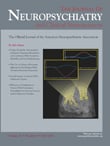To the Editor: Both malnutrition and heavy alcohol use adversely affect the peripheral and CNS function.
1,
2 Acute motor axonal neuropathy is a known variant of Guillian Barré syndrome with a clinical course that includes motor paralysis, hyporeflexia, and rarely sensory loss.
2 Acute motor axonal neuropathy scenarios in alcoholics have been reported as very rare case reports.
2 –
5 Case Report
A 45-year-old man presented to our emergency service complaining of weakness in both arms and legs which he experienced when he arose in the morning. His history revealed chronic alcohol intake (more than 450 g/week for 20 years), and that he had “not taken anything orally” other than alcohol for approximately 10 days. On neurological examination of the patient, who had a history of pancreatitis attacks 15 years ago and prostate hypertrophy, his cranial nerves were found to be intact, and his proximal 4/5 and distal 1/5 of his upper extremities and proximal 1/5 and distal 3/5 of his lower extremities were evaluated as paretic.
Sensorial examination of the patient, whose deep tendon reflexes were inactive, was normal. No sign of pyramidal irritation was determined. A urethral catheter was given to the patient, who had globe vesicale. We found no history of upper respiratory tract infection or gastroenteritis within the last 1 month. The patient was hospitalized and approximately 4 hours later developed low oxygen saturation levels, associated with shallow breathing. Treatment of this patient was continued in the intensive care unit for 5 days. Hypoxia at levels that required mechanical ventilation assistance were not observed.
On laboratory examination, levels of liver enzymes (aspartate aminotransferase [AST]: 80 U/liter; alanine aminotransferase [ALT]: 73 U/liter; γ-glutamyltransferase: 511 U/liter) and creatinine kinase (1,300 U/liter) were found to be markedly high. Vitamin B 12 levels were 130 pg/dl. Albuminocytological dissociation (protein: 53 mg/dl; cell: 0 mm 3 ) was determined on examination of his CSF. On immunoelectrophoresis, monoclonal bands, antinuclear antibodies and anti-GM1, anti-GM2 ganglioside antibodies were found to be negative. Despite a mild slowing of motor nerve conduction velocity, serious decrease was determined by the amplitudes on his electromyography examination. Sensorial nerves were found to be nearly normal. Acute denervation findings were determined for the distal upper extremity and proximal lower extremity muscles on the needle electromyography examination.
Intravenous immunoglobulin therapy at a dose of 0.4g/kg/day was administered to the patient for 5 days in the intensive care unit. Afterward, the patient was retransferred to our clinic because his respiratory complaint had disappeared. Parenteral B complex vitamin therapy and physiotherapy were done for 10 days. Physiotherapy and treatment for alcohol addiction are still ongoing. Muscle strength (proximal upper extremity 5/5, distal upper extremity 4/5, proximal lower extremity 4/5, distal lower extremity 5/5) and biochemical parameters were significantly improved.
Discussion
In addition to thiamine and cobalamin deficiency, direct toxic effects of ethanol are also considered to be responsible for the etiopathogenesis of the acute axonal neuropathies that occur in alcoholics.
2 Unlike Guillian Barré syndrome, ascendant involvement was not observed in the present case. The differential diagnosis from classic Guillian Barré syndrome was easily made by electromyography findings, and peripheral axonal involvement without demyelinating findings was determined.
In addition to considering acute myopathy for the diagnosis of the patient, due to high levels of creatine phosphokinase, it was accepted as acute motor axonal neuropathy with significantly low CMAP amplitudes and the presence of conduction blocks. The high levels of ALT, AST, γ-glutamyltransferase, and creatine phosphokinase were considered signs of chronic pancreatitis. Anti-GM1 and anti-GM2 antibodies were negative. These antibodies are found to be positive in 40%–50% of acute motor axonal neuropathy cases.
6Normalization of biochemical parameters and almost complete relief from clinical findings were observed in the patient within 1 month. He responded fairly well to intravenous immunoglobulin therapy. In the literature, intravenous immunoglobulin and plasmapheresis have also been suggested for acute motor axonal neuropathy as well as for classic Guillian Barré syndrome.
7With the help of the nonascending involvement type and electromyography findings, we were able to make the differential diagnosis from classic Guillian Barré syndrome. The present case is important because it is a reminder that atypical acute polyneuropathy can be a complication of alcoholism.

